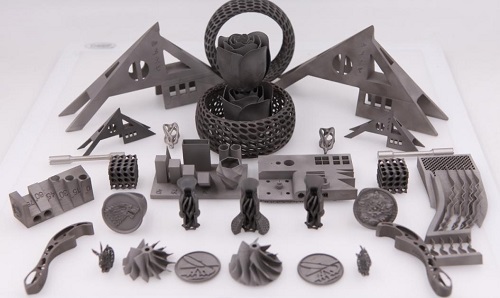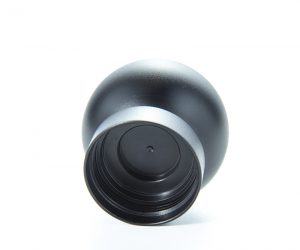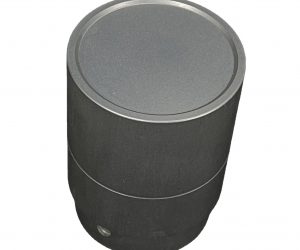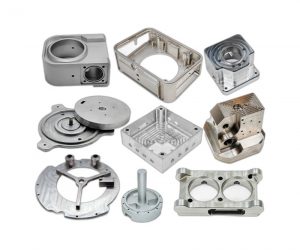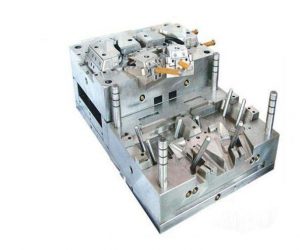The Algorithmic Revolution in Manufacturing: A Deep Dive into Impressão 3D's Disruptive Potential
I. Introduction: Beyond the Hype – 3D Printing's Paradigm Shift
A. The Genesis of Disruption: Additive Manufacturing's Ascent
The manufacturing paradigm is fracturing. Traditional subtractive methods, honed over centuries, are yielding to the disruptive force of additive manufacturing – 3D printing. This isn't merely incremental improvement; it's a fundamental shift, redefining design freedom, production efficiency, and the very definition of "possible" in industrial output. This exploration delves into the complex interplay of algorithms, materials science, and industrial processes that are transforming global manufacturing.
B. A Roadmap Through the Additive Labyrinth: Navigating the Process
This treatise will navigate the intricate landscape of 3D printing in manufacturing, from the genesis of a digital design to the post-processing refinement of a fully realized component. We will dissect the core principles of additive manufacturing, examining the diverse technological approaches and the critical role of material selection in achieving optimal performance. The journey will encompass the complexities of model preparation, the nuances of layer-by-layer deposition, and the often-overlooked, yet crucial, post-processing techniques that ensure dimensional accuracy, surface finish, and structural integrity. Finally, we will analyze the profound economic and strategic implications of this transformative technology.
II. Deconstructing the Additive Process: Fundamentals and Frontiers
A. The Algorithmic Heart of Additive Manufacturing: Beyond Simple Layering
Additive manufacturing transcends simple layer-by-layer deposition. It's a sophisticated interplay of algorithms that control deposition parameters, material flow, and energy delivery, all optimized for the desired material properties and geometric complexity. Understanding these algorithms, their inherent limitations, and the potential for optimization is crucial for maximizing the efficacy of 3D printing in diverse manufacturing contexts. We will explore the mathematical models underlying these processes, revealing the intricate relationship between digital design and physical realization.
B. A Taxonomy of Additive Technologies: Navigating the Technological Landscape
The field boasts a diverse array of additive manufacturing technologies, each with unique strengths and limitations. We will examine the dominant methodologies – Fused Deposition Modeling (FDM), Stereolithography (SLA), Selective Laser Melting (SLM), Electron Beam Melting (EBM), and Binder Jetting – analyzing their respective material compatibility, resolution capabilities, and suitability for specific applications. The discussion will extend beyond established techniques to explore emerging technologies, such as digital light processing (DLP) and multi-material printing, highlighting their potential to further revolutionize manufacturing processes.
C. The Material Matrix: Unlocking Performance Through Material Selection
Material science is the keystone of successful additive manufacturing. The choice of material is not merely a matter of aesthetics or cost; it dictates the final product's mechanical properties, thermal stability, and chemical resistance. We will explore the diverse range of materials currently utilized in additive manufacturing, from polymers and composites to metals and ceramics, examining their unique characteristics and suitability for various applications. Furthermore, we will delve into the challenges and opportunities presented by the development of novel materials specifically tailored for additive manufacturing processes. The discussion will highlight the crucial interplay between material properties, printing parameters, and the desired performance characteristics of the final product.
III. The 3D Printing Manufacturing Process: A Complex Adaptive System
A. Design and Preparation: Navigating the Algorithmic Labyrinth. The genesis of a 3D-printed artifact lies not in mere design, but in the intricate dance between human intention and computational constraint. Designers must transcend the limitations of traditional CAD, employing parametric modeling and generative design algorithms to create not just aesthetically pleasing models, but topologically optimized structures tailored to specific material properties and printing parameters. This phase necessitates a deep understanding of the chosen additive manufacturing (AM) technology's inherent limitations and possibilities, demanding a sophisticated interplay between artistic vision and engineering rigor. Failure at this stage cascades through the entire process, potentially resulting in catastrophic print failures or functionally compromised end-products.
B. Slicing and Printer Preparation: Orchestrating the Material Symphony. The seemingly simple act of slicing the 3D model into printable layers is, in reality, a computationally intensive process requiring sophisticated algorithms to optimize layer adhesion, minimize support structures, and account for the anisotropic properties of the chosen material. Printer preparation transcends mere calibration; it involves a meticulous assessment of environmental factors—temperature, humidity, ambient vibrations—that can subtly yet significantly impact print quality. The selection of support structures is no longer a binary choice but a complex optimization problem, balancing the need for robust support with the difficulty of subsequent removal and potential for print distortion. The entire process resembles the precise orchestration of a complex musical score, where each note (parameter) contributes to the overall harmony (successful print).
C. Layer-by-Layer Deposition: The Emergence of Form from Chaos. The core AM process is far from a simple layering of material. It's a dynamic, self-organizing system where the interplay of material properties, print head dynamics, and thermal gradients dictates the final microstructure and macroscopic properties of the printed object. Whether employing fused deposition modeling (FDM), stereolithography (SLA), selective laser melting (SLM), or other AM techniques, the process is governed by complex physical phenomena—heat transfer, fluid dynamics, phase transitions—that require sophisticated control systems and real-time feedback mechanisms to ensure consistent layer adhesion and dimensional accuracy. The slightest deviation from optimal parameters can lead to print failures, warping, or internal stresses that compromise the structural integrity of the final product.
IV. Post-Processing and Quality Control: Refining the Imperfect
A. Cleaning and Finishing: Sculpting the Artifact's Essence. Post-processing is not merely cosmetic; it's a crucial step in realizing the full potential of the AM process. The removal of support structures requires careful consideration of material properties and the potential for damage to the printed part. Surface finishing techniques—sanding, polishing, chemical etching, coating—are not simply aesthetic enhancements; they can significantly improve the part's mechanical properties, corrosion resistance, and overall durability. This phase demands a nuanced understanding of material science and a skilled hand, transforming a rough, imperfect print into a refined, functional object.
B. Quality Assurance: Ensuring Functional Fidelity. Quality control in AM goes beyond simple visual inspection. It demands the application of rigorous testing protocols—dimensional metrology, mechanical testing, non-destructive evaluation—to verify the printed part's conformance to design specifications and its ability to withstand anticipated stresses and environmental conditions. The implementation of robust quality management systems (QMS) is paramount, ensuring traceability, repeatability, and continuous improvement of the entire AM process. This rigorous approach is critical for building trust and ensuring the reliability of AM-produced components in high-stakes applications.
C. Enhancing Durability and Appearance: Transcending Limitations. The inherent limitations of AM technologies can be mitigated through advanced post-processing techniques. Heat treatment can improve material crystallinity and enhance mechanical properties. Infiltration with polymers or ceramics can increase density and reduce porosity. Surface coatings can provide enhanced protection against corrosion, wear, and UV degradation. These techniques represent a sophisticated interplay between material science, process engineering, and surface engineering, pushing the boundaries of what's possible with AM.
V. Benefits of 3D Printing in Manufacturing: A Paradigm Shift
A. Rapid Prototyping and Accelerated Innovation: AM's ability to rapidly prototype and iterate designs is not merely a time-saving measure; it's a catalyst for innovation. The ability to quickly fabricate and test multiple design iterations allows for a more efficient exploration of the design space, leading to optimized designs that would be impossible to achieve with traditional manufacturing methods. This iterative process accelerates the pace of innovation, allowing for faster product development cycles and quicker time to market.
B. Cost Optimization and Sustainable Manufacturing: While initial investment in AM equipment can be significant, the long-term cost benefits are substantial. The elimination of tooling costs, reduced material waste, and streamlined production processes contribute to significant cost savings. Moreover, AM's ability to produce on-demand parts reduces inventory costs and minimizes the environmental impact associated with traditional manufacturing. This paradigm shift towards a more sustainable and cost-effective manufacturing model is transforming industries worldwide.
C. Design Freedom and Personalized Production: AM unlocks unprecedented design freedom, enabling the creation of complex geometries and highly customized products that were previously impossible to manufacture. This capability extends beyond mere aesthetics; it allows for the creation of functionally graded materials, optimized for specific performance requirements, and the production of personalized products tailored to individual customer needs. This shift towards mass customization is revolutionizing various sectors, from healthcare to aerospace.
VI. Navigating the Labyrinthine Challenges of Additive Manufacturing Integration
A. The Technological Chasm and the Imperative of Workforce Transformation:
The accelerating proliferation of 3D printing within the manufacturing ecosystem necessitates a paradigm shift in workforce development. Merely equipping employees with operational proficiency in additive manufacturing equipment is insufficient. A profound understanding of digital design methodologies, intricate additive manufacturing workflows, and the nuanced interplay between traditional and additive processes is paramount. Failure to bridge this technological chasm risks stifling the transformative potential of 3D printing, leaving manufacturers mired in the limitations of legacy production paradigms. The successful integration hinges not just on technological acquisition, but on a comprehensive, multi-faceted approach to human capital development, anticipating and proactively addressing the evolving skillset demands of this rapidly evolving field.
B. Reconciling the Old and the New: Integrating Additive Manufacturing into Established Production Frameworks:
For manufacturers entrenched in established production systems, the integration of 3D printing presents a complex orchestration of logistical, operational, and technological harmonization. Seamless collaboration between additive and subtractive manufacturing processes demands a strategic, meticulously planned approach, transcending mere technological adoption. This integration necessitates a deep understanding of the inherent strengths and limitations of each methodology, enabling the identification of optimal applications and a strategically efficient allocation of resources within the overall production pipeline. The challenge lies not only in technological compatibility, but in the cultural and organizational shifts required to fully leverage the transformative potential of additive manufacturing within a pre-existing framework.
C. The Regulatory Maze, Standardization Imperatives, and the Protection of Intellectual Property:
The democratization of 3D printing technology necessitates a robust regulatory framework to address the emergent complexities of standardization and intellectual property protection. Manufacturers face the daunting task of navigating a complex legal and regulatory landscape, ensuring compliance with evolving industry standards and safety regulations while simultaneously safeguarding their intellectual property from infringement. The proliferation of counterfeit products poses a significant threat, demanding proactive measures to protect innovation and maintain the integrity of the additive manufacturing sector. The future of additive manufacturing hinges on the collaborative development of a clear, comprehensive, and internationally recognized regulatory structure.
VII. Industries Transformed: A Glimpse into the Additive Manufacturing Revolution
A. Aerospace and Defense: A Crucible of Innovation:
The aerospace and defense sectors stand as pioneers in the adoption of 3D printing, leveraging its capabilities to produce complex, lightweight, and highly customized components. This technology has become indispensable in enhancing performance, operational efficiency, and the strategic flexibility of these industries. From the creation of intricate aircraft components to the on-demand manufacturing of mission-critical equipment, 3D printing empowers these sectors to maintain a decisive competitive edge, driving innovation and pushing the boundaries of technological capability. The implications extend beyond mere efficiency gains, impacting strategic advantage and national security.
B. Automotive and Transportation: Redefining Mobility through Additive Manufacturing:
The automotive and transportation industries are undergoing a profound transformation fueled by the integration of 3D printing. Rapid prototyping, streamlined testing cycles, and the on-demand production of customized parts, tooling, and even entire vehicle components are reshaping the landscape of mobility. This technology enables greater design flexibility, optimized supply chain management, and a dynamic responsiveness to evolving market demands. The implications extend to sustainability initiatives, allowing for the creation of lighter, more fuel-efficient vehicles and the reduction of material waste.
C. Medical Devices and Biomanufacturing: Personalized Medicine and Beyond:
The medical devices and biomanufacturing sectors represent a particularly compelling application of 3D printing's transformative potential. The creation of personalized prosthetics, implants, and surgical tools signifies a paradigm shift towards patient-centric healthcare. Furthermore, the integration of 3D printing into biomanufacturing opens unprecedented possibilities in tissue engineering, organ fabrication, and the development of innovative pharmaceutical products, pushing the boundaries of medical science and redefining the possibilities of therapeutic intervention. The ethical considerations surrounding these advancements, however, demand careful and ongoing scrutiny.
VIII. Future Outlook: A Fractured Paradigm Shift in Additive Manufacturing
A. The Singularity of Additive Manufacturing: Beyond Incremental Advancements
The trajectory of additive manufacturing (AM) transcends mere incremental progress. We stand on the precipice of a paradigm shift, fueled not by linear evolution but by exponential convergence of disparate technologies. The near future will witness the emergence of AM systems capable of manipulating matter at the nanoscale, integrating bio-printing with advanced material science, and seamlessly integrating AI-driven design optimization with autonomous fabrication processes. This isn't simply about faster printing or new materials; it's about a fundamental reimagining of the manufacturing process itself, blurring the lines between digital design and physical instantiation. Expect the unexpected: self-healing materials, programmable metamaterials, and the integration of quantum computing to optimize fabrication processes at a level previously unimaginable.
B. Decentralized Production: A Geopolitical and Economic Earthquake
The democratization of manufacturing, enabled by AM, is not a gradual process; it's a seismic event reshaping global supply chains and power dynamics. The ability to produce highly customized, complex products on demand, locally, will disrupt existing manufacturing ecosystems fundamentally. This decentralization will empower micro-factories, fostering regional economic growth while simultaneously challenging established multinational corporations. The implications extend beyond economics; geopolitical landscapes will be redefined as nations gain greater control over their manufacturing capabilities, potentially leading to both unprecedented opportunities and unforeseen conflicts. The traditional notion of a global supply chain will become increasingly obsolete, replaced by a network of localized, adaptive production hubs.
C. Sustainability's Crucible: AM's Role in a Circular Bioeconomy
The environmental imperative demands a radical rethink of manufacturing, and AM offers a unique pathway towards a circular bioeconomy. Beyond simply reducing waste, AM presents the potential for closed-loop systems where materials are endlessly recycled and repurposed. The integration of bio-based materials and bio-printing technologies will lead to the creation of biodegradable and compostable products, minimizing environmental impact. However, the sustainability of AM is not guaranteed; careful consideration must be given to energy consumption, material sourcing, and the lifecycle assessment of AM processes. The future hinges on a holistic approach, integrating AM with sustainable practices to forge a truly environmentally responsible manufacturing sector.
IX. Conclusion: Navigating the Uncharted Territories of Additive Manufacturing
A. A New Era of Creation: Redefining the Boundaries of Possibility
AM's impact extends far beyond mere production efficiency; it fundamentally alters our relationship with the physical world. It empowers designers and engineers to realize previously impossible geometries, fostering innovation across diverse sectors, from aerospace and medicine to architecture and art. The speed and agility of AM facilitate rapid prototyping and iterative design, accelerating the pace of technological advancement. This is not merely an evolution of manufacturing; it's a revolution in creation itself, pushing the boundaries of human ingenuity and shaping a future where the digital and physical realms are inextricably intertwined.
B. The Unfolding Narrative: AM's Enduring Legacy
The future of manufacturing is not a predetermined outcome; it's a narrative still unfolding. AM, however, will undoubtedly play a pivotal role, driving innovation, reshaping economies, and fundamentally altering our relationship with the environment. The challenges are significant – addressing ethical concerns, managing technological disruption, and ensuring sustainable practices – but the potential rewards are equally immense. The journey into the future of manufacturing is fraught with uncertainty, but one thing remains clear: AM is not merely a technology; it's a transformative force shaping the world we inhabit.
Frequently Asked Questions
1. What are the key benefits of integrating 3D printing into the manufacturing process?
The key benefits of integrating 3D printing into the manufacturing process include rapid prototyping and shortened time to market, cost reduction and efficient use of materials, and unparalleled design freedom and customization. 3D printing enables manufacturers to quickly create and test physical models, streamline their operations, and explore innovative product designs that would be challenging or impossible using traditional manufacturing methods.
2. How does 3D printing technology enable manufacturers to overcome traditional production constraints?
3D printing really opens up a lot of possibilities that weren't there with old-school manufacturing. It lets makers design more intricate, natural, and tailored items. By skipping the need for molds, tools, and assembly lines, 3D printing gives creators the freedom to dream big. This leads to making parts and products that break new ground in shape, use, and customization, sparking fresh chances for creativity and quick responses in manufacturing.
